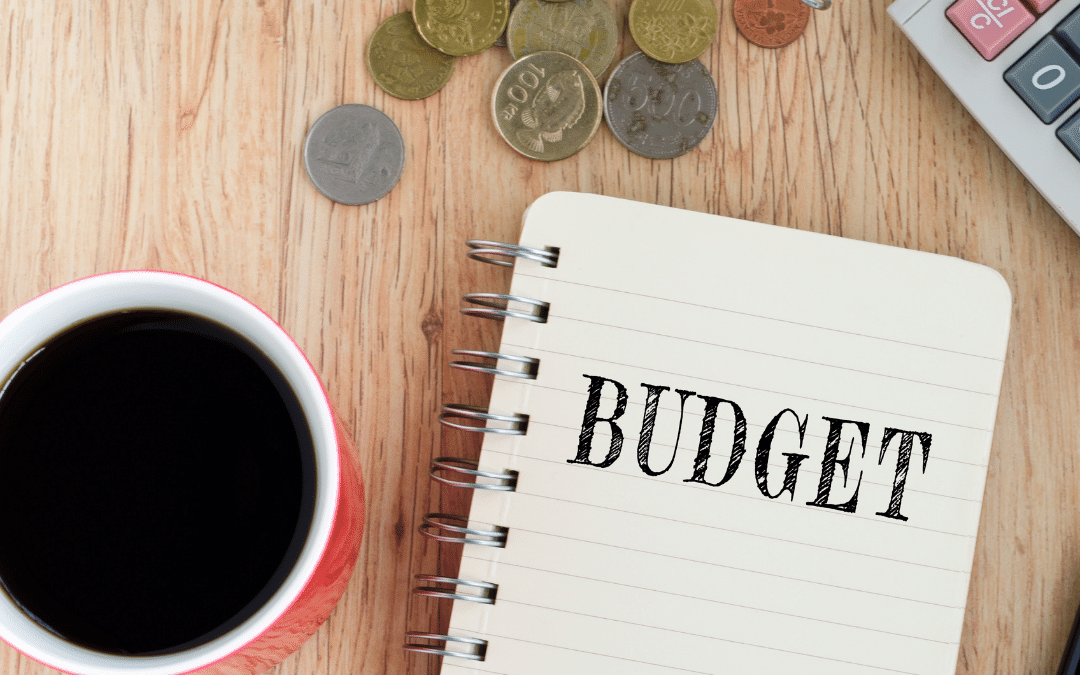If you’re like most North Americans, you’re likely in the middle of holiday spending, which, depending on where you look, averages between $1000 and $1500 for the season. Unless you’ve budgeted and can put this money aside, it can really set you back heading into the New Year. Did you know that the third Monday in January is called Blue Monday? It’s typically around the time most people feel down, likely because by now those credit card bills are rolling in….
But regardless of what happens in December, it is possible to set yourself up for success and make 2022 your best financial year yet, with a simple budget.
Where do you even start when you’re trying to create a monthly budget? Let’s take a look:
Income
First and foremost, it’s important to know how much money you have coming in each month after taxes. If you receive a regular paycheck every two weeks, that’s easy enough to find out. But if you’re a freelancer, consultant, or work on commission – it could be more difficult. Take a look at your last six months’ and get an average this way.
Expenditure
Expenditure: otherwise known as the money you spend. This column is usually more extensive than folks first write down, and that’s because expenditure is not only made up of the fixed bills you have each month (like rent, your internet, etc.) but also includes variable expenses like groceries, gas, or expenses for pets, and miscellaneous spending like takeout coffees.
Make sure you are including any donations or subscriptions, as well as yearly fees (these can also be broken down into monthly installments for your convenience).
Accurately tracking your bills and payments can be tricky – you may have a monthly credit card payment, but make sure you are also including any interest that accumulates, for example. If you are unsure, we can help you track your expenses – just send us a message.
Investments
Investments are tricky – as you pay into them each month, these are technically an expenditure. But they also earn interest on them, increasing your net worth and, when you withdraw from them, increase your income.
Savings
If you are fortunate enough to be able to hit the end of the month before the end of the money, then you’re able to accumulate savings and these also need to be included on your monthly budget. Not to be confused with investments – savings are funds that accumulate but don’t generally gain as much interest as an investment. In addition, savings are typically easier to access than investment funds. Savings are therefore generally used for things like emergency funds, or saving for a weekend trip.
Once you have determined your income and expenses, you will need to create a physical document using Microsoft Excel, Google Sheets, an app, or even using good old paper and pencil, whichever is easiest for you. Most programs have a standard template saved for different types of budgets – you can choose whichever style and type you prefer.
Here is a portion of the template from Google Drive’s Sheets:

You will add and delete rows to personalize the budget depending on your expenses and income.
Make a habit of checking your numbers every single month, so you know exactly where your money is going. After a few months, you’ll be able to get a better understanding of your variable spending and draw averages.
Some important notes about tracking your monthly expenses:
- Use paperwork to get solid numbers instead of estimating – e.g. bank statements, investment accounts, utility bills, W-2s and paystubs, 1099s, Credit card bills, receipts, mortgage and auto loan statements.
- Don’t forget the ‘extras’ – app subscriptions, online gaming, and similar.
- Pay attention to variable expenses – these may not be the same from month to month, and events like birthdays are often unplanned (but don’t have to be!)
- Categorize your expenses – essential expenses are those which never change (fixed), variable expenses are those which may change on a monthly basis (e.g. water consumption, electricity, gas), and discretionary expenses are those which rely on your discretion (e.g. clothing, eating out, once off experiences, cinema etc.)
- Set goals – your house may be in need of maintenance, or maybe you have a vacation coming up soon. These types of events require a large sum of money one time, and you will need to plan this into your budget (often called a sinking fund – we’ll cover these in January!)
An important part of budgeting and following your plan is to keep it in mind and make sure that you are monitoring and maintaining your records. It will not help to go to all the trouble of creating the budget, only to brush it off and continue as normal. A good rule of thumb to follow is the 50/30/20 rule – divide your expenditure into 50% essential (your needs), 30% discretionary (your wants) and 20% investment (savings/repayment of debts).
No matter how you choose to save or budget, whether by using your bank, or investments, or if you are old school and still keep a piggy bank – a financial advisor is the right person to guide you. If you are serious about making changes in your spending habits, saving for a specific goal or planning for the future, set up an free appointment with Steven today – click on this link for more information.

